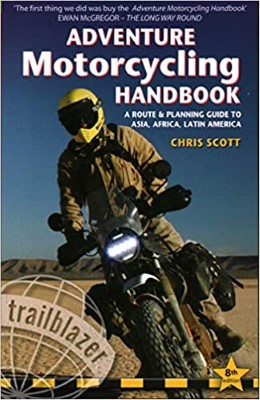 |

19 Apr 2010
|
|
Registered Users
Veteran HUBBer
|
|
Join Date: Mar 2001
Posts: 921
|
|
 origins of the Ubari/Awbari lakes
origins of the Ubari/Awbari lakes
I have heard all the stories (I think), but is there a definitive description of their creation, continued existence etc.?
Cheers, Sam.
|

19 Apr 2010
|
|
Moderator
Veteran HUBBer
|
|
Join Date: May 2001
Location: Oxford, U.K.
Posts: 625
|
|
Palaeohydrology of the Fazzan Basin and surrounding regions: The last 7 million yearsHere is a summary of an article on the palaeo drainage of Libya..... Author(s): Drake NA (Drake, N. A.) 1, El-Hawat AS (El-Hawat, A. S.) 2, Turner P (Turner, P.) 3, Armitage SJ (Armitage, S. J.) 4, Salem MJ (Salem, M. J.) 5, White KH (White, K. H.) 6, McLaren S (McLaren, S.) 7
Source: PALAEOGEOGRAPHY PALAEOCLIMATOLOGY PALAEOECOLOGY Volume: 263 Issue: 3-4 Pages: 131-145 Published: JUN 23 2008
Abstract: We have integrated information on topography, geology and geomorphology with the results of targeted fieldwork in order to develop a chronology for the development of Lake Megafazzan, a giant lake that has periodically existed in the Fazzan Basin since the late Miocene. The development of the basin can be best understood by considering the main geological and geomorphological events that occurred thought Libya during this period and thus an overview of the palaeohydrology of all Libya is also presented. The origin of the Fazzan Basin appears to lie in the Late Miocene. At this time Libya was dominated by two large rivers systems that flowed into the Mediterranean Sea, the Sahabi River draining central and eastern Libya and the Wadi Nashu River draining much of western Libya. As the Miocene progressed the region become increasingly affected by volcanic activity on its northern and eastern margin that appears to have blocked the River Nashu in Late Miocene or early Messinian times forming a sizeable closed basin in the Fazzan within which proto-Lake Megafazzan would have developed during humid periods. The fall in base level associated with the Messinian desiccation of the Mediterranean Sea promoted down-cutting and extension of river systems throughout much of Libya. To the south of the proto Fazzan Basin the Sahabi River tributary know as Wadi Barjuj appears to have expanded its headwaters westwards. The channel now terminates at Al Haruj al Aswad. We interpret this as a suggestion that Wadi Barjuj was blocked by the progressive development of Al Haruj al Aswad. K/Ar dating of lava flows suggests that this occurred between 4 and 2 Ma. This event would have increased the size of the closed basin in the Fazzan by about half, producing a catchment close to its current size (-350,000 km(2)). The Fazzan Basin contains a wealth of Pleistocene to recent palaeolake sediment outcrops and shorelines. Dating of these features demonstrates evidence of lacustrine conditions during numerous interglacials spanning a period greater than 420 ka. The middle to late Pleistocene interglacials were humid enough to produce a giant lake of about 135,000 km(2) that we have called Lake Megafazzan. Later lake phases were smaller, the interglacials less humid, developing lakes of a few thousand square kilometres. In parallel with these palaeohydrological developments in the Fazzan Basin, change was occurring in other parts of Libya. The Lower Pliocene sea level rise caused sediments to infill much of the Messinian channel system. As this was occurring, subsidence in the Al Kufrah Basin caused expansion of the Al Kufrah River system at the expense of the River Sahabi. By the Pleistocene, the Al Kufrah River dominated the palaeohydrology of eastern Libya and had developed a very large inland delta in its northern reaches that exhibited a complex distributary channel network which at times fed substantial lakes in the Sirt Basin. At this time Libya was a veritable lake district during humid periods with about 10% of the country underwater. (C) 2008 Elsevier B.V. All rights reserved.
|

21 Apr 2010
|
|
Registered Users
Veteran HUBBer
|
|
Join Date: Mar 2001
Posts: 921
|
|
Well, that's cleared that up then!? :confused1:
Erm, any chance of something a little simpler and practical?! 
Cheers, Sam.
|

21 Apr 2010
|
|
Moderator
Veteran HUBBer
|
|
Join Date: May 2001
Location: Oxford, U.K.
Posts: 625
|
|
|
What, from scientists?!
Nick Drake at Kings College is the guy to ask. I'll get on to him....
|

21 Apr 2010
|
|
Registered Users
Veteran HUBBer
|
|
Join Date: Mar 2001
Posts: 921
|
|
|
Hi Richard,
Cheers!
Sam.
|

28 Apr 2010
|
|
Moderator
Veteran HUBBer
|
|
Join Date: May 2001
Location: Oxford, U.K.
Posts: 625
|
|
|
Sam,
Nick's reply is below. I have copied the abstract of the paper onto the thread - there's more from that paper if you want....
Hi
I take it you mean the lakes that still contain water. If so little or
nothing has been done on them as far as I am aware. They are groundwater
fed vestiges of more numerous lakes in the sand sea that have now dried
up. We have done a bit on them.
Parker, A.G., Harris, B.M., White, K.H., *Drake, N.A*. (2008) Phytoliths
as indicators of grassland dynamics during the Holocene from lake
sediments in the Ubari Sand Sea, Fezzan Basin, Libya. /Libyan Studies,
/39,/ /29-40.
Abstract
This study presents the first phytolith study from the Saharan region. Phytolith analysis shows the potential of reconstructing grassland dynamics during the Holocene, refining our knowledge of palaeoecosystems in the Ubāri Sand Sea, Libya. The lake sediments studied range in age between 3273-9440 cal. BP. Tree cover was very low around 3273-3436 and 6678-6796 cal. BP, and the landscape was dominated by C4 grasslands around 6678-6796 cal. BP, shifting to a more mixed C3-C4 grassland community around 3273-3436 cal. BP. These differences may be caused by the older sample being deposited during the onset of a brief arid period, but a similar phytolith assemblage could arise due to a more pronounced seasonality in the climate, with C3 grasses dominating late and early in the growing season when the climate is cooler and less arid, and C4 grasses becoming dominant in the hot, dry summer season.
|
|
Currently Active Users Viewing This Thread: 1 (0 Registered Users and/or Members and 1 guests)
|
|
|
 Posting Rules
Posting Rules
|
You may not post new threads
You may not post replies
You may not post attachments
You may not edit your posts
HTML code is Off
|
|
|
|

Check the RAW segments; Grant, your HU host is on every month!
Episodes below to listen to while you, err, pretend to do something or other...

2020 Edition of Chris Scott's Adventure Motorcycling Handbook.
"Ultimate global guide for red-blooded bikers planning overseas exploration. Covers choice & preparation of best bike, shipping overseas, baggage design, riding techniques, travel health, visas, documentation, safety and useful addresses." Recommended. (Grant)

Ripcord Rescue Travel Insurance™ combines into a single integrated program the best evacuation and rescue with the premier travel insurance coverages designed for adventurers.
Led by special operations veterans, Stanford Medicine affiliated physicians, paramedics and other travel experts, Ripcord is perfect for adventure seekers, climbers, skiers, sports enthusiasts, hunters, international travelers, humanitarian efforts, expeditions and more.
Ripcord travel protection is now available for ALL nationalities, and travel is covered on motorcycles of all sizes!
What others say about HU...
"This site is the BIBLE for international bike travelers." Greg, Australia
"Thank you! The web site, The travels, The insight, The inspiration, Everything, just thanks." Colin, UK
"My friend and I are planning a trip from Singapore to England... We found (the HU) site invaluable as an aid to planning and have based a lot of our purchases (bikes, riding gear, etc.) on what we have learned from this site." Phil, Australia
"I for one always had an adventurous spirit, but you and Susan lit the fire for my trip and I'll be forever grateful for what you two do to inspire others to just do it." Brent, USA
"Your website is a mecca of valuable information and the (video) series is informative, entertaining, and inspiring!" Jennifer, Canada
"Your worldwide organisation and events are the Go To places to for all serious touring and aspiring touring bikers." Trevor, South Africa
"This is the answer to all my questions." Haydn, Australia
"Keep going the excellent work you are doing for Horizons Unlimited - I love it!" Thomas, Germany
Lots more comments here!

Diaries of a compulsive traveller
by Graham Field
Book, eBook, Audiobook
"A compelling, honest, inspiring and entertaining writing style with a built-in feel-good factor" Get them NOW from the authors' website and Amazon.com, Amazon.ca, Amazon.co.uk.
Back Road Map Books and Backroad GPS Maps for all of Canada - a must have!
New to Horizons Unlimited?
New to motorcycle travelling? New to the HU site? Confused? Too many options? It's really very simple - just 4 easy steps!
Horizons Unlimited was founded in 1997 by Grant and Susan Johnson following their journey around the world on a BMW R80G/S.
 Read more about Grant & Susan's story
Read more about Grant & Susan's story
Membership - help keep us going!
Horizons Unlimited is not a big multi-national company, just two people who love motorcycle travel and have grown what started as a hobby in 1997 into a full time job (usually 8-10 hours per day and 7 days a week) and a labour of love. To keep it going and a roof over our heads, we run events all over the world with the help of volunteers; we sell inspirational and informative DVDs; we have a few selected advertisers; and we make a small amount from memberships.
You don't have to be a Member to come to an HU meeting, access the website, or ask questions on the HUBB. What you get for your membership contribution is our sincere gratitude, good karma and knowing that you're helping to keep the motorcycle travel dream alive. Contributing Members and Gold Members do get additional features on the HUBB. Here's a list of all the Member benefits on the HUBB.
|
|
|